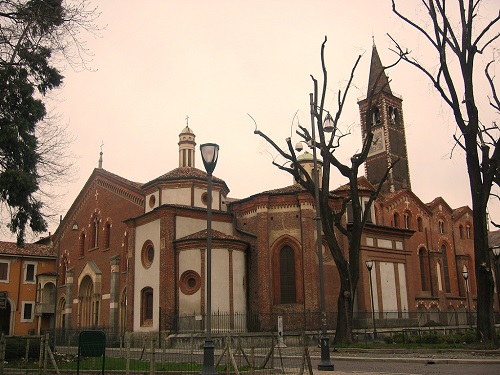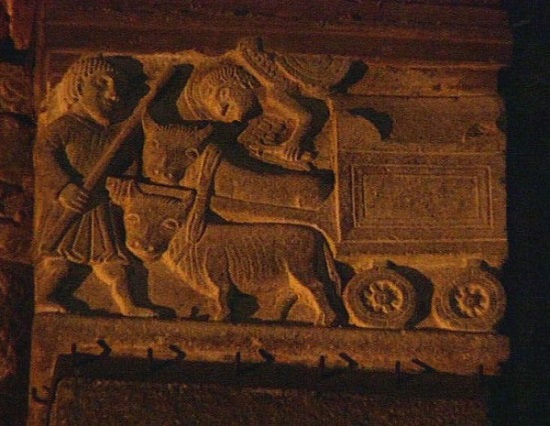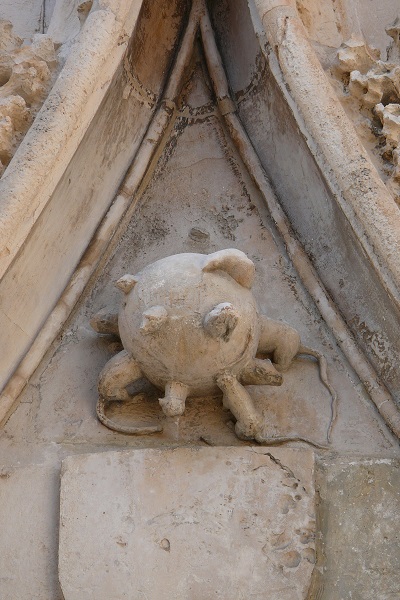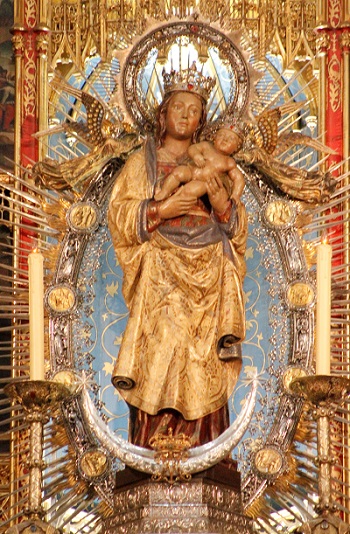In the Basilica of Sant’Eustorgio, Milan, with some difficulty, you will see a haut-relief on the capital of the fifth column to the right of the nave, which depicts the transport of the bodies of the Three Magi to Milan. Dating from the eleventh century, it shows Eustorgio leading oxen drawing a wagon on which stand a marble sarcophagus containing their mortal remains.
Tradition has it that thirty-three years after taking part in the Nativity, the Three Kings returned to Jerusalem to be present at the Crucifixion, and that they died there, one after the other, as martyrs. Collected together, their three bodies were later taken to Constantinople , when Queen Helena, mother of Constantine the Great, was gathering together the first collection of Christian relics. It was Constantine’s son, Emperor Constans I, who gave the relics to Eustorgio during the latter’s visit to Constantinople prior to becoming Bishop of Milan. The future saint then had a marble sarcophagus or ark sculpted, placed on a wagon drawn by two oxen and set off for Milan in 344. This image is the scene depicted on the capital in the basilica.
When Eusorgio arrived at Porta Ticinese, not far from the city’s first baptismal fonts, the wagon became bogged down in the mud and was impossible to move. Eustorgio took this as a sign from God and ordered that the Basilica of the Magi – now known as the Basilica of Sant’Eustorgio – should be built on that very spot.
Eight centuries later, the forces of Frederick I Barbarossa sacked the city and seized their precious relics, which the emperor gave to the archbishop of Cologne, Rainald von Dassel in 1164. All attempts to bring the remains back to Milan failed. Then in 1904, Cardinal Ferrari, archbishop of Milan, was finally able to restore to Sant’Eustorgio the bones of the Magi (two fibulas, a tibia and a vertebra), which had been presented to the city by the archbishop of Cologne, Mgr Fischer.
A procession held on the Feast of the Epiphany still celebrates this event. The crypt and small chapel containing the relics are in the south transept of the basilica. At the top of the bell-tower – the highest in Milan, and in 1306, the first in the city to have a clock that told the time rather than a mechanism that simply rang the hours – the spire does not end in the usual cross but in an eight-point star, recalling the star the Magi followed to Bethlehem.
So on your next trip to Milan, take time to visit the Basilica of Sant’Eustorgio and seek out the haut-relief and the eight-point star on top of the bell-tower. It is certainly well worth the visit.











